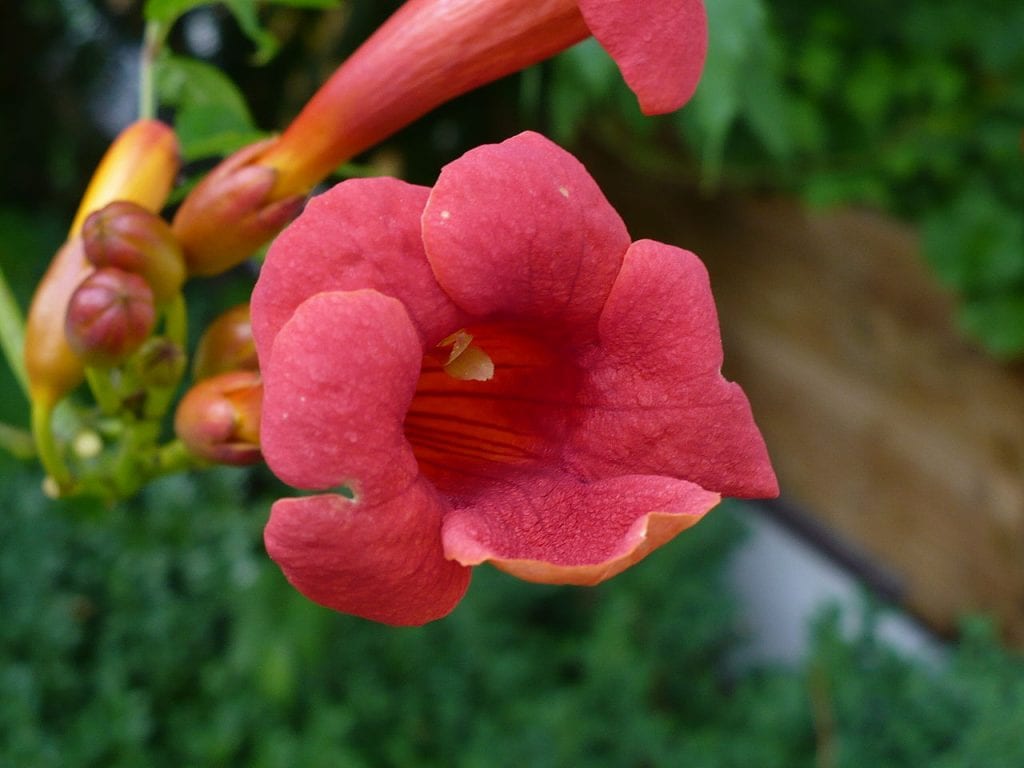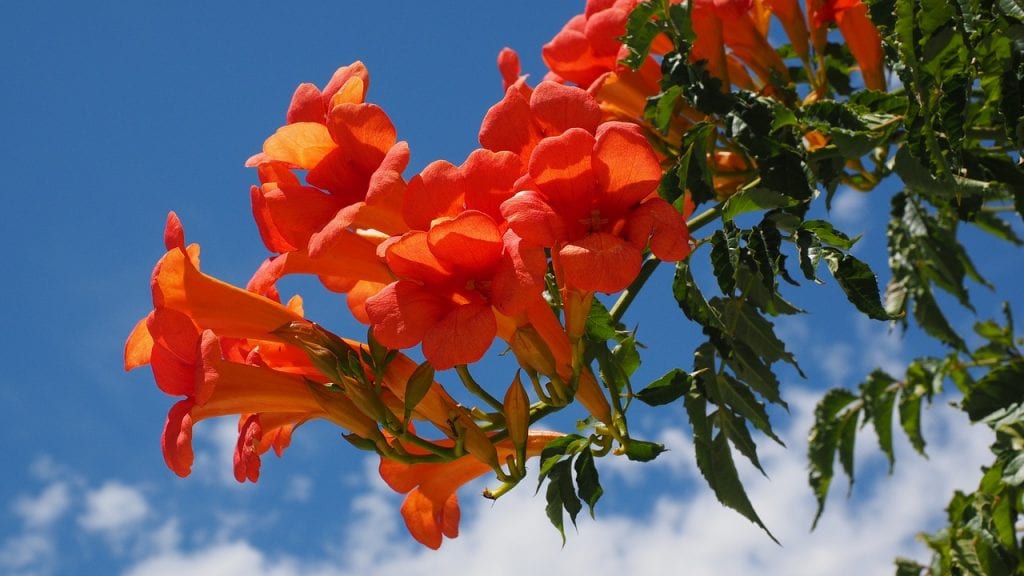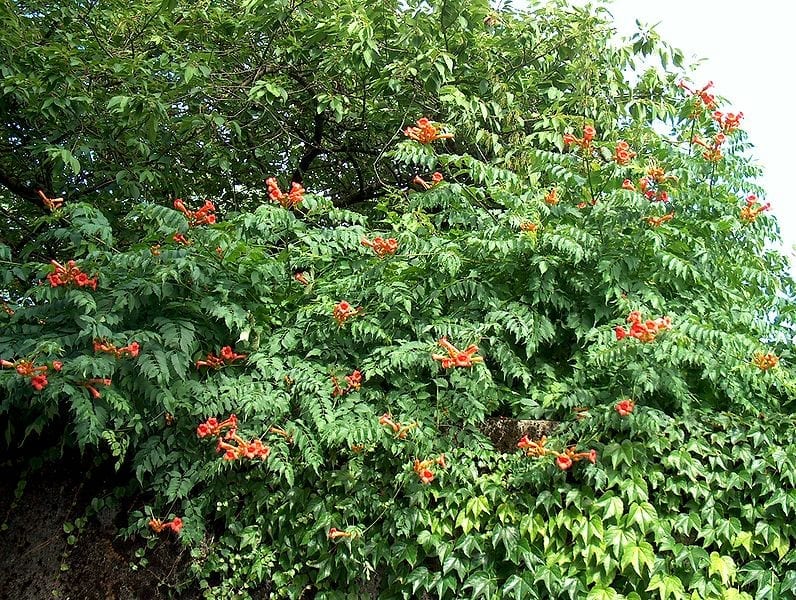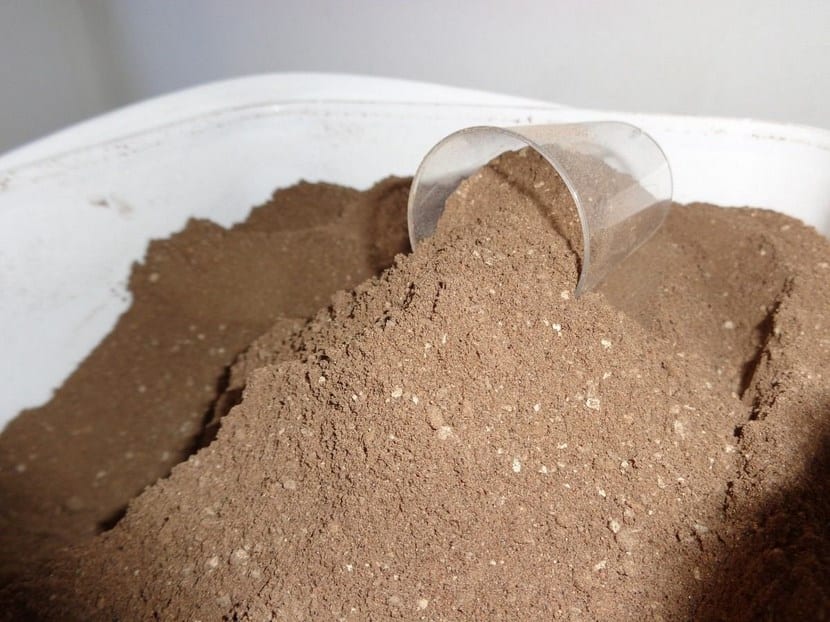
La Campsis radicals It is one of the vines that, apart from producing very beautiful flowers, is capable of withstanding very intense frosts. The most interesting thing is that it grows quite fast, so if you need to cover a roof or a wall and you are in a bit of a hurry, nothing like planting a specimen of this species.
In addition, it does not usually have pest or disease problems, so taking care of her is a magnificent experience .
Origin and characteristics

Our protagonist is a deciduous climber (loses its leaves in autumn-winter) native to the forests of the southeastern United States whose scientific name is Campsis radicals (o Bignonia radicals). It is popularly known as Virginia jasmine, red bignonia or fire trunk, and can reach a maximum height of 10 meters. Its bearing is vigorous, and its trunk is thick.
The leaves are ovate, pinnate, 3 to 10cm long by 2-6cm wide, dark green when ripe. The flowers are grouped in terminal inflorescences of orange to red color, passing through yellow. The fruits are a smooth, cylindrical capsule 10-16cm long, inside which are fine and brown seeds.
What are their cares?
If you want to have a copy, we recommend that you provide it with the following care:
Location

It is a plant that must be abroad, in full sun or in semi-shade. In addition, it is important that it is planted next to strong and resistant structures, such as a wall, a well-supported concrete and / or iron lattice, etc.
A tall, dry log might also be worth it. If you don't have anything else and you don't feel like cutting it down, but you should know that sooner or later you will have to look for an alternative since over time (years) said trunk will rot.
Earth
Despite being very vigorous, it can be had both in a pot and in the garden:
- Flower pot- No need to fiddle with substrates. The universal of all life, the one that they already sell ready to use in any nursery or in this link, will serve.
- Garden: grows in all types of soils, but prefers those with good drainage.
Irrigation
The frequency of watering will vary a lot throughout the year: while during the summer months you will have to water very often, the rest of the time it will not be necessary to do so much. So how often do you water exactly? Well, the truth is that gardening is not an exact science since each climate and each area is different.
Therefore, to avoid problems I always advise to check the humidity of the soil or substrate doing any of these things:
- Introduce a thin wooden stick, like the one they give us in Japanese restaurants: if when you take it out you see that it comes out with a lot of soil attached, don't water.
- Using a digital moisture meter: when you enter it, it will tell you instantly how wet or dry the soil that has come into contact with it is.
- Weigh the pot once watered and again after a few days: the wet earth has a greater weight than the dry one. This difference in weight will help you know more or less when to water.
When in doubt, the best thing to do is… wait a bit 🙂. It is much easier to recover a dry plant than one that has suffered excess watering, so if you wait a couple of days more nothing will happen to it (unless, of course, it is already showing symptoms of lack of water , such as dry ends, and / or fall of leaves and flowers, in which case the precious element should be supplied as soon as possible).
Subscriber

Guano powder.
In spring and summer it is advisable to pay to the Campsis radicals with ecological fertilizersand guano, once a month.
Multiplication
It multiplies by seeds and cuttings in spring. Let's see how to proceed in each case:
Seeds
You have to follow this step by step:
- First, a pot of about 10,5cm in diameter must be filled with universal growing medium.
- Then, it is watered consciously.
- Next, a maximum of two seeds are placed so that they are slightly separated from each other and covered with a thin layer of substrate.
- Finally, the pot is placed outside, in full sun.
That way they will germinate in one or two months.
Cuttings
It is very simple: it will be enough to take a piece of stem of about 40cm, impregnate the base with homemade rooting agents and plant it in a pot with previously watered universal cultivation substrate.
Pruning
Can be pruned late winter, or in autumn if you live in an area with a climate without strong frosts. You have to remove dry, sick or weak branches or stems, also those that are broken and trim those that are growing too much.
Pests
It is very resistant, but if the conditions are not suitable it can be attacked by mealybugs, Red spider, aphids y White fly. They are fought with specific insecticides, or with diatomaceous earth (you can get it here).
Management
Can have botrytis, which is a fungal-borne disease that causes leaves and shoots to wilt and dry out. It is fought with fungicides.
Rusticity
Resists without problems up to -18ºC. It cannot live in climates without frost.

Campsis radicals var. flava
What did you think of Campsis radicals?